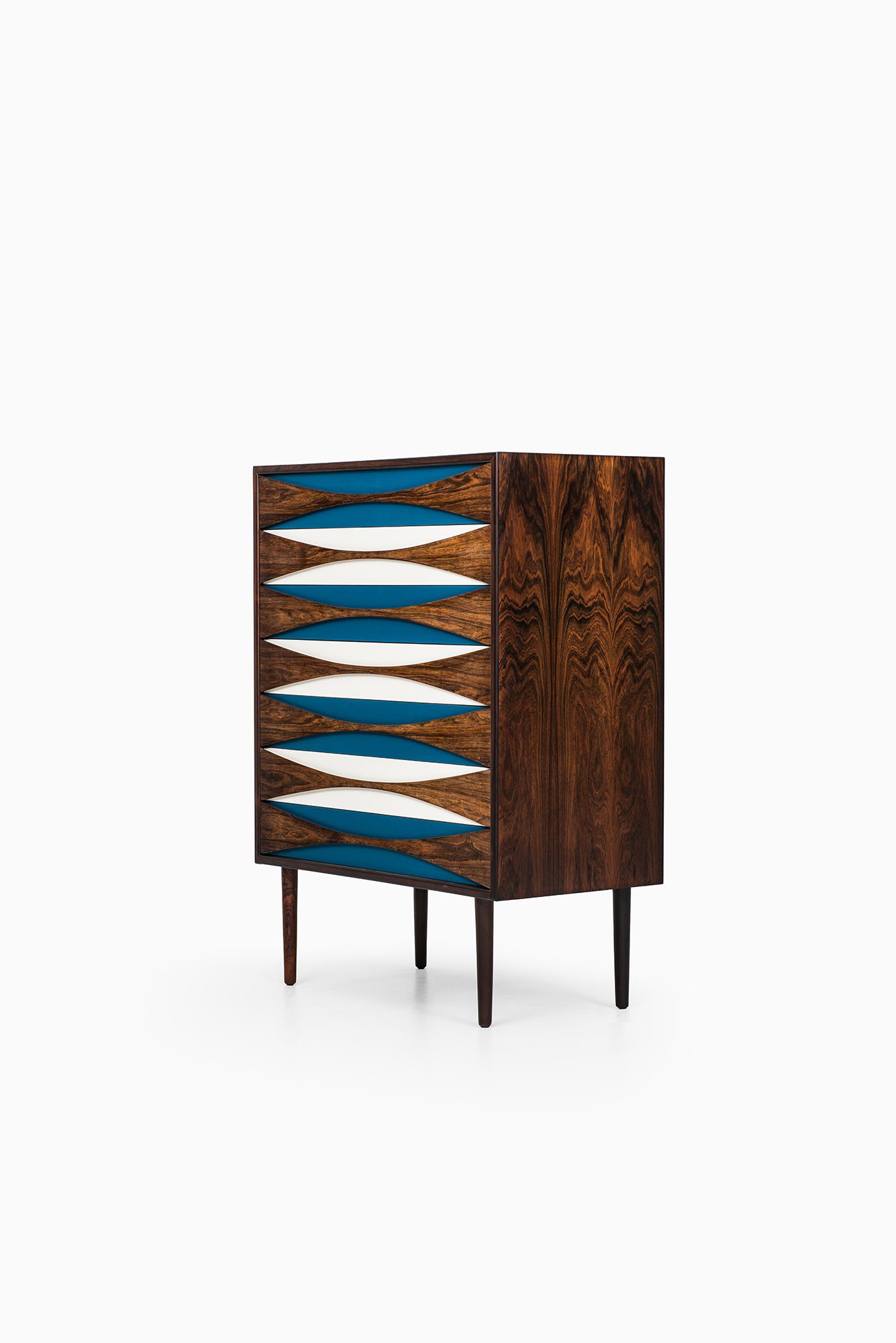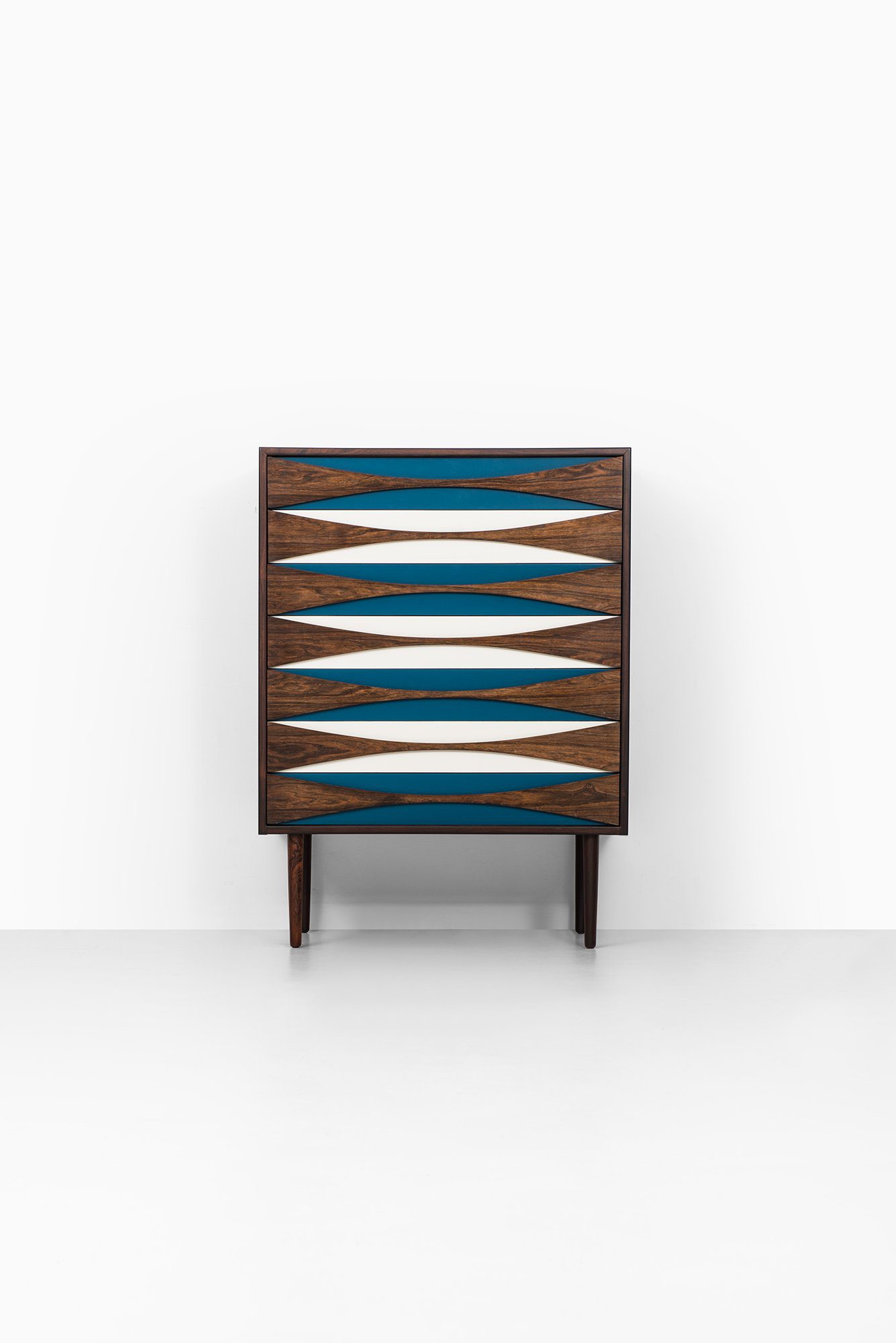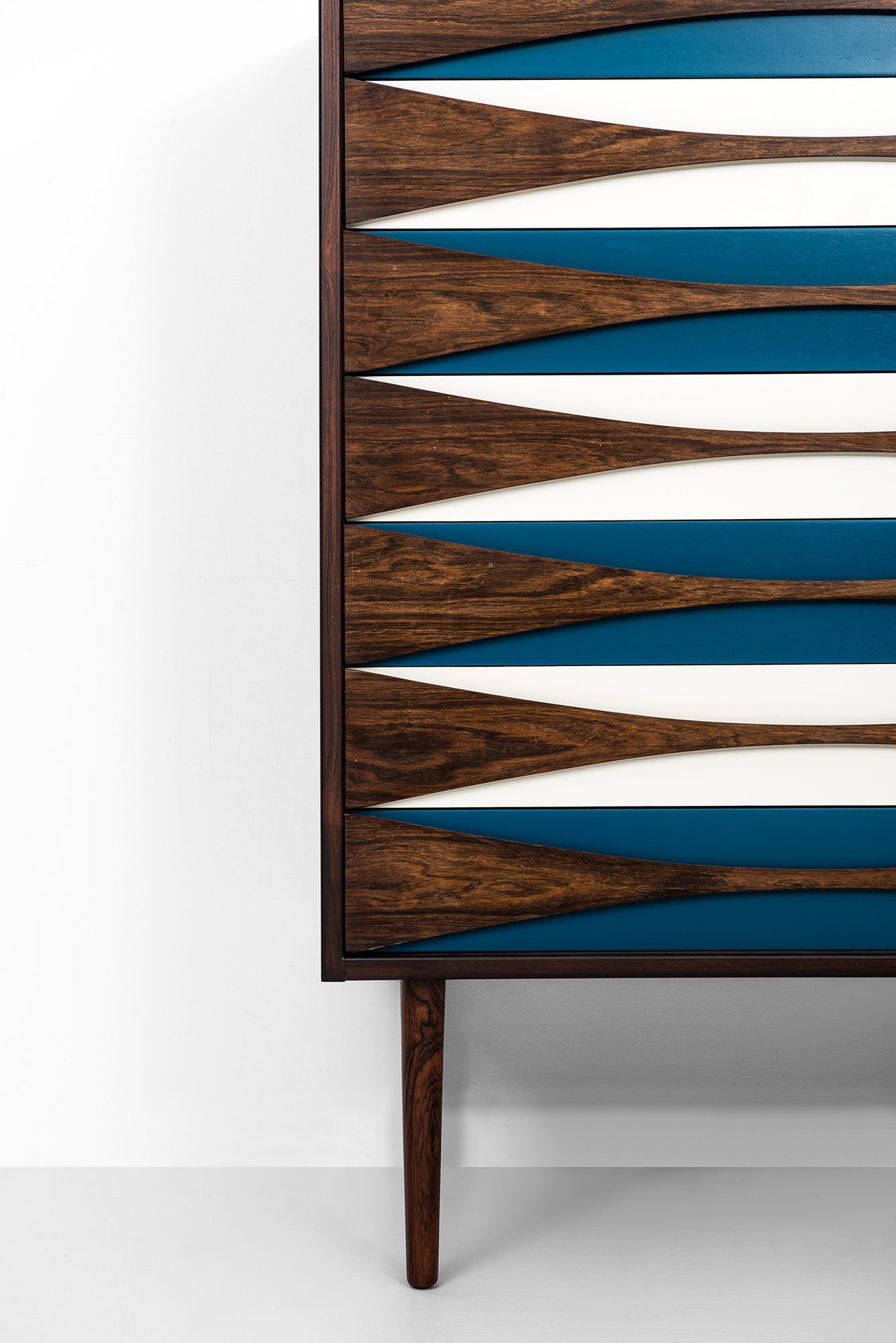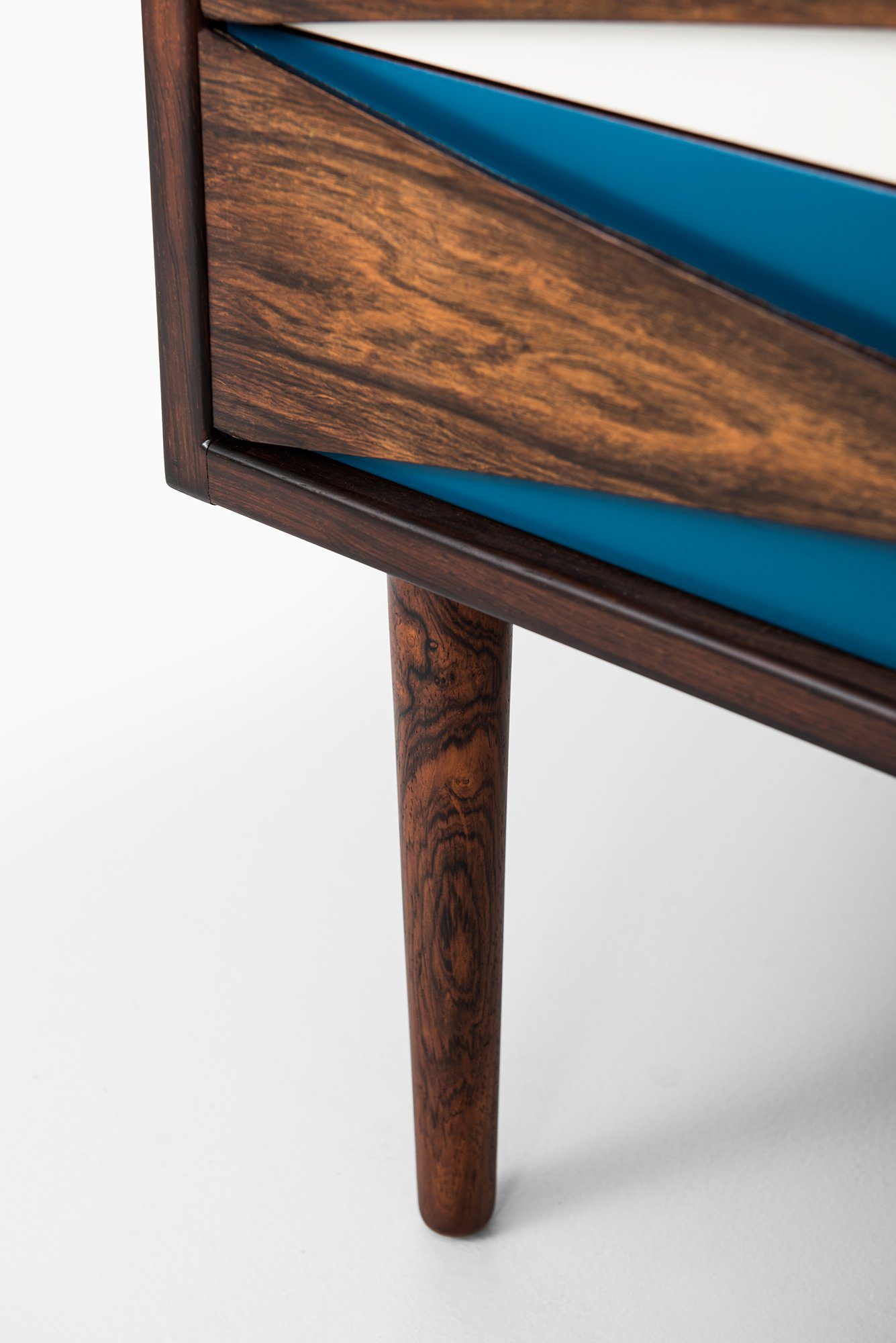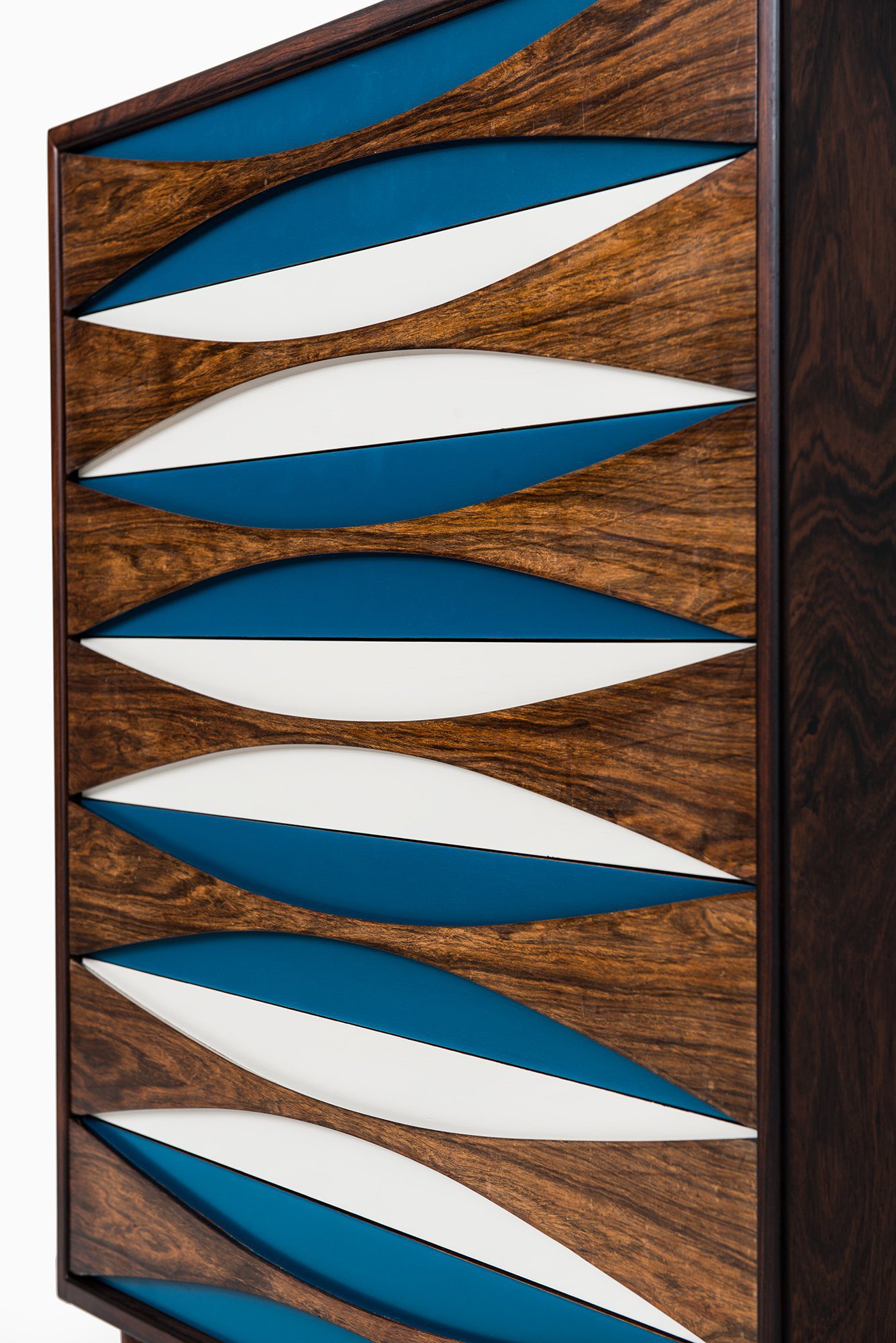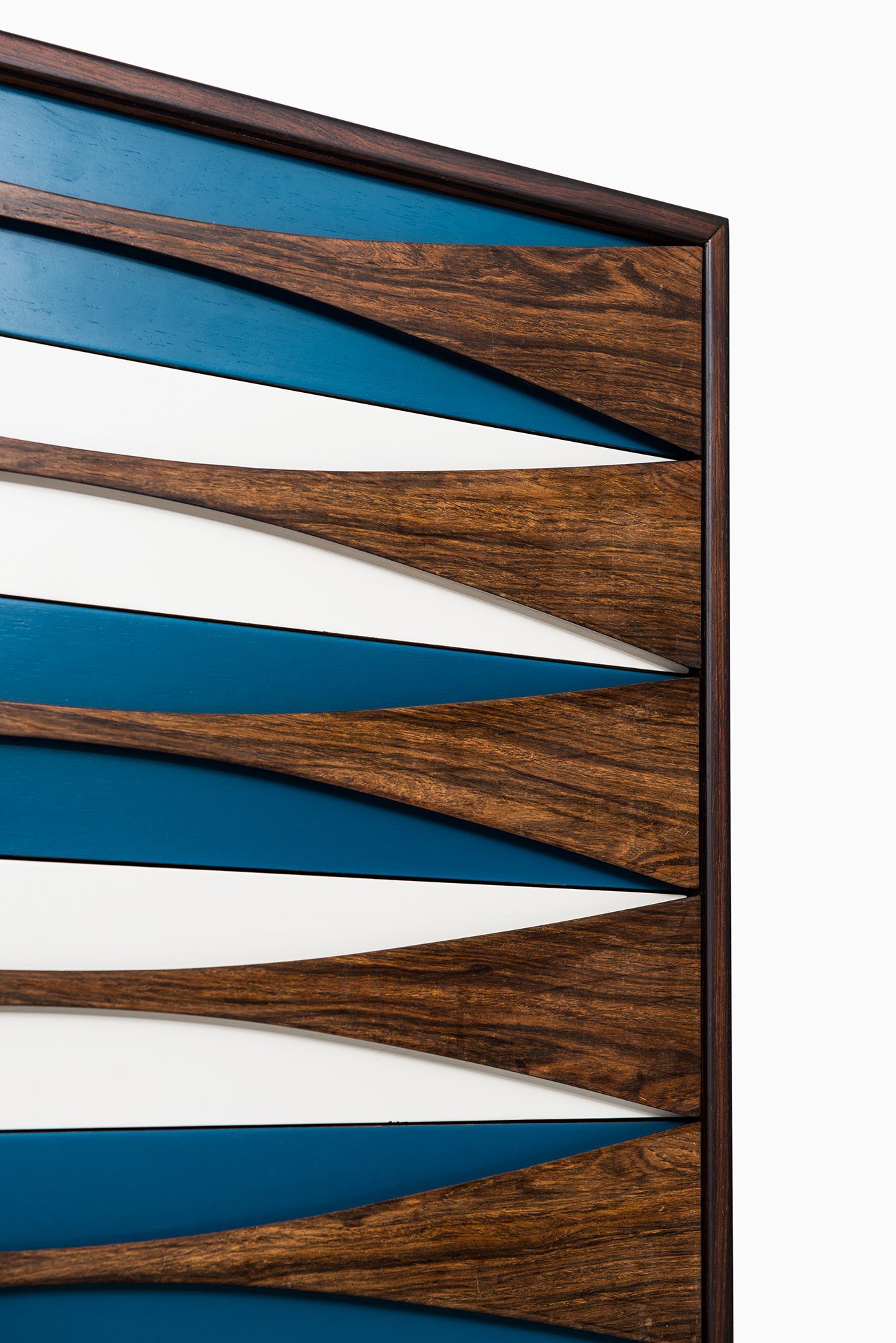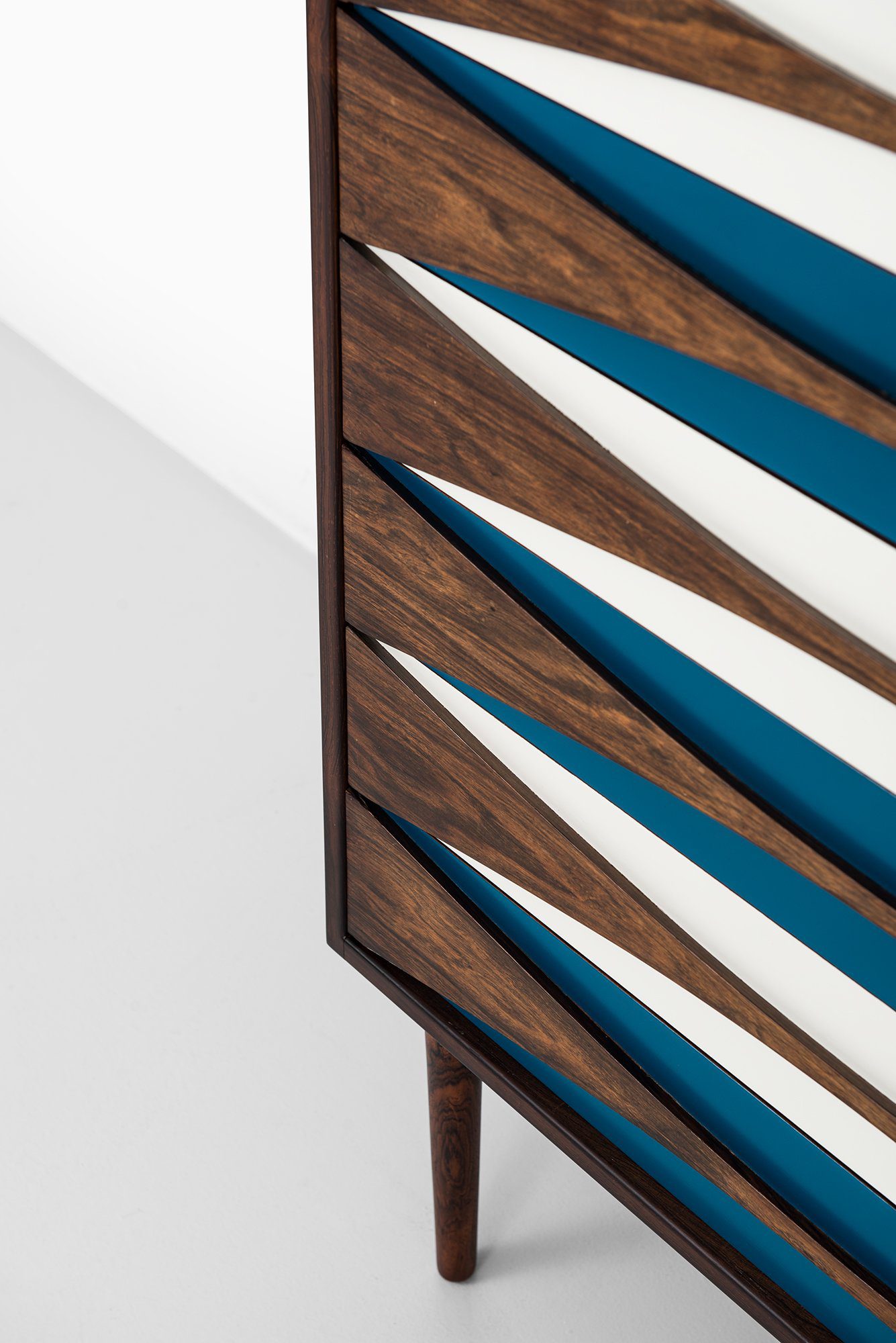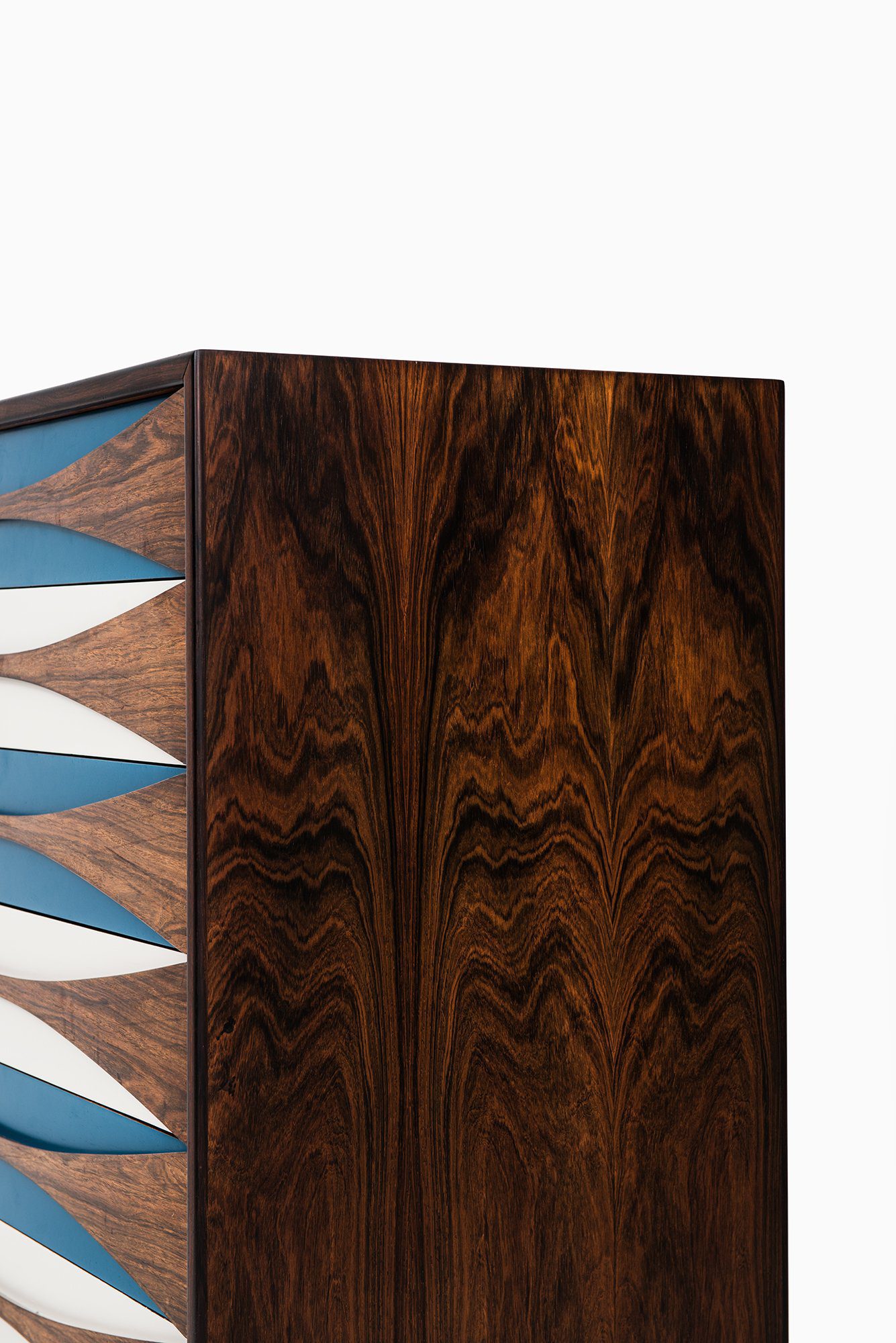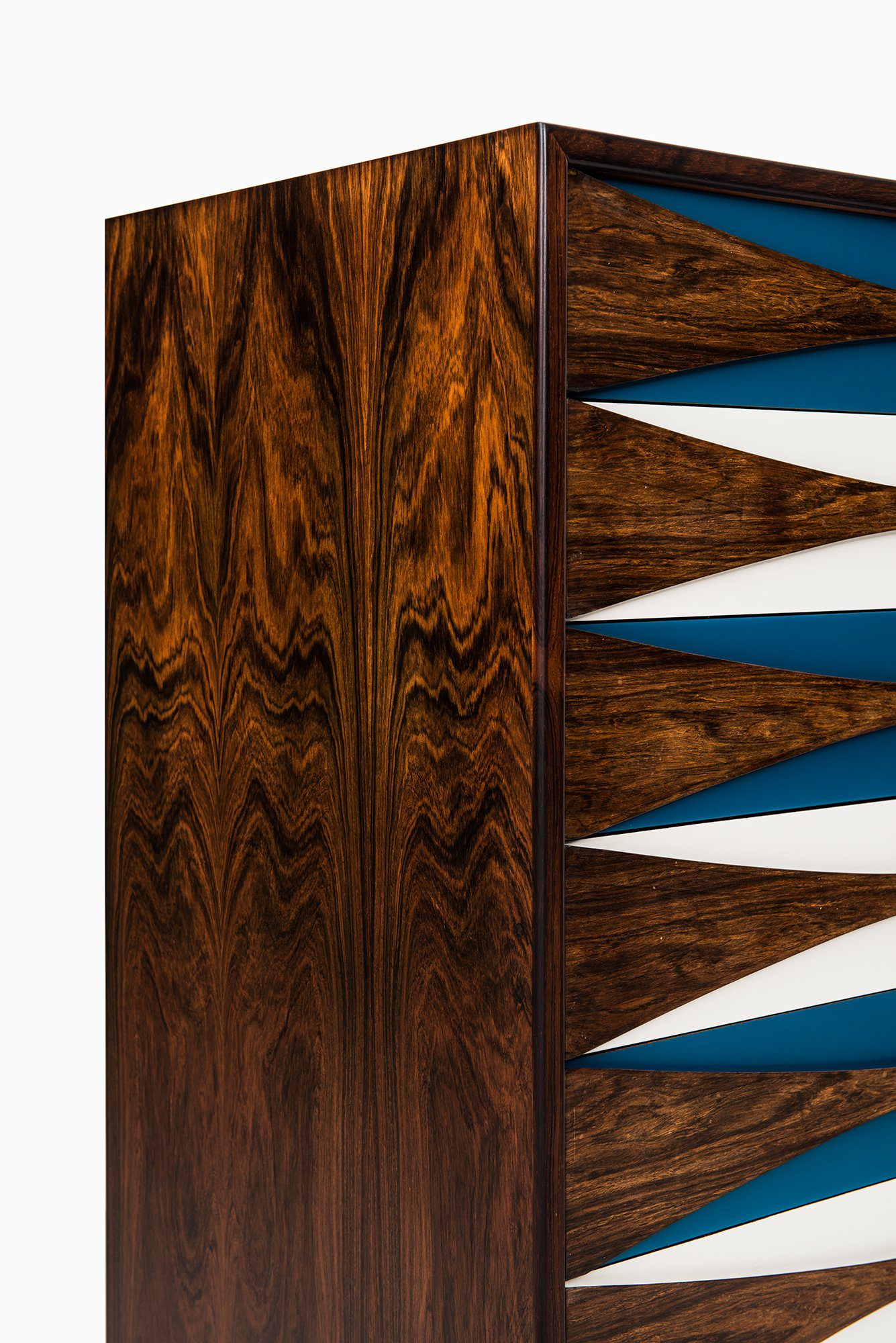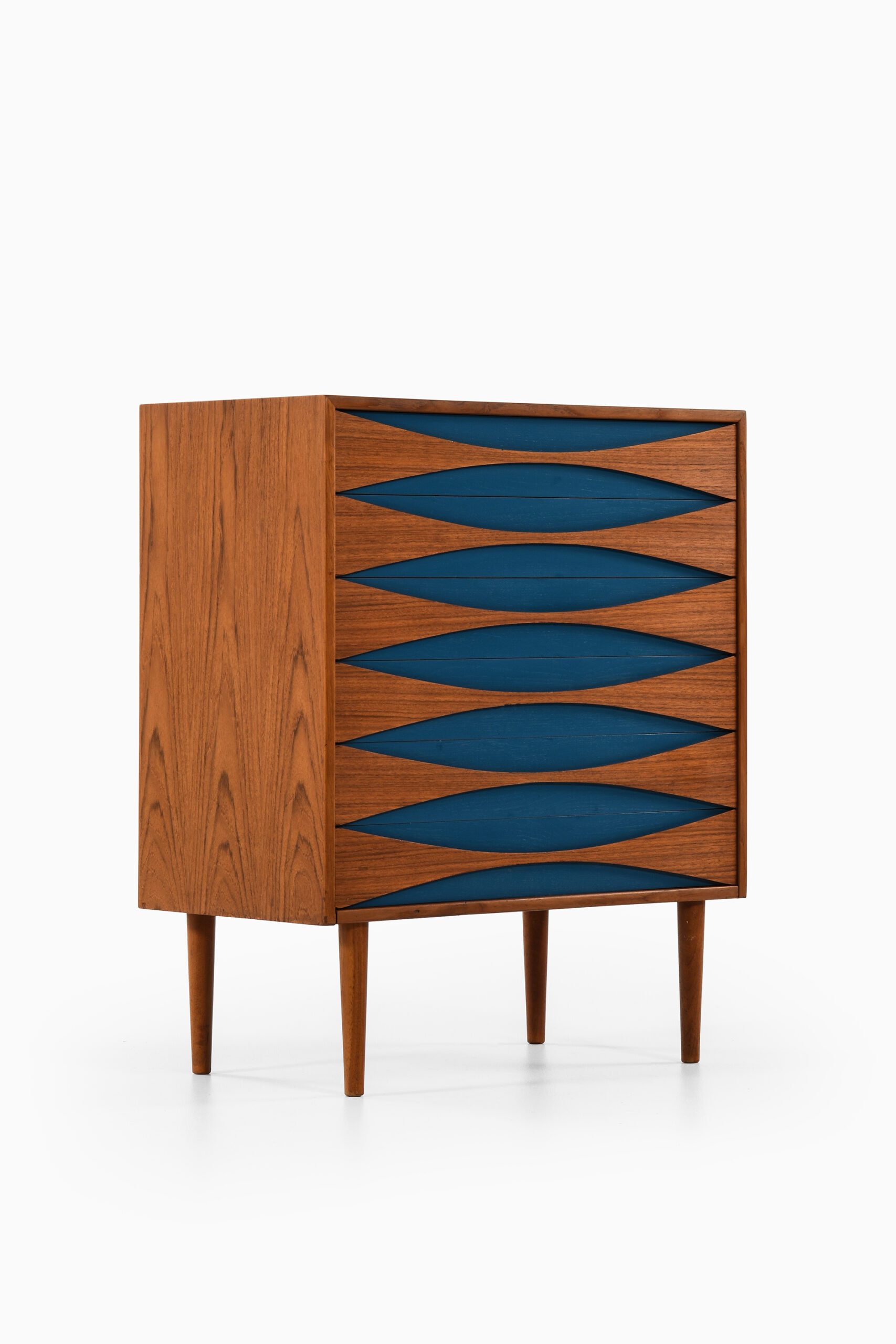Arne Vodder attrib. bureau
This rare bureau is attributed to Arne Vodder and was produced by N.C. Møbler in Denmark in the 1950s. The cabinet is crafted from richly grained rosewood, displaying a striking, symmetrical pattern on the side panels and drawer fronts. The surface has been carefully restored to bring out the natural depth and warmth of the wood, resulting in a smooth, satin finish that accentuates the vivid figure of the veneer.
The piece consists of a tall, narrow case fitted with seven drawers. Each drawer features Vodder’s characteristic sculptural front design, with concave, organically curved handles that reveal alternating bands of blue and white lacquer, creating a dynamic visual rhythm across the facade. The bureau stands on four tapered rosewood legs, giving it an elevated and elegant profile that balances its vertical proportions.
Arne Vodder was a prominent figure in Danish modern design, known for his refined sense of proportion and his inventive use of form and color. His work often combined rich natural woods with playful color elements, as seen in this bureau’s lacquered drawer panels. N.C. Møbler was a Danish manufacturer that collaborated with a number of leading designers to produce high-quality furniture during the mid-20th century, focusing on craftsmanship and enduring design.
This bureau represents the best of mid-century Scandinavian aesthetics, uniting functionality with a sculptural quality that makes it suitable for both storage and display. Its restored condition ensures that it remains in excellent vintage shape, with only minimal traces of wear consistent with careful use over time.
Dimensions: width 84 cm (33.1 inches), depth 45 cm (17.7 inches), height 114 cm (44.9 inches).
Dimensions (cm) | W: 84 / D: 45 / H: 114 |
| Producer | N.C. Møbler |
| Color | Blue, White |
| Decade | 1950s |
| Country | Denmark |
| Style | Danish modern, Mid Century, Scandinavian Modern |
| Material | Lacquer, Rosewood |
| Designed in | 1950s |
| Item Number | 96458 |
Arne Vodder
Arne Vodder was trained by Finn Juhl, who became his friend and business partner. Before concentrating on furniture alone, in 1951 he opened his own studio with the architect Anton Borg. Together they designed some 1,100 low-cost houses which prov...
Read more